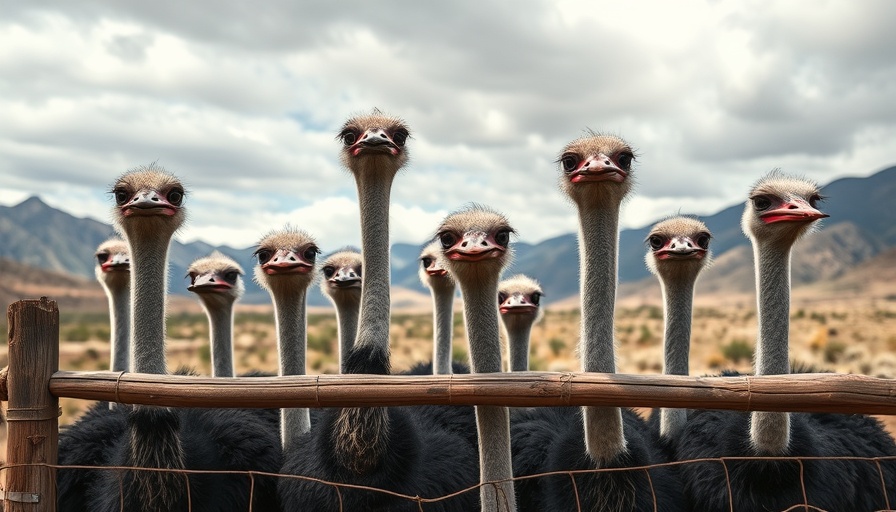
Standstill on Culling: A Community's Plea for Testing
In Edgewood, British Columbia, the debate surrounding the upcoming cull of ostriches is heating up as the Regional District of Central Kootenay (RDCK) calls for comprehensive testing of nearly 400 ostriches before any drastic measures are taken. This move comes as local community members rally against the cull ordered by the Canadian Food Inspection Agency (CFIA), spurred by a recent outbreak of avian flu at a nearby farm that resulted in the death of 69 birds.
Public Sentiment: An Outcry for Animal Welfare and Testing
Residents of the region have voiced their concerns loudly, with hundreds of emails flooding in to support the ostriches. Teresa Weatherhead, the director for electoral area K, echoed this sentiment, stating, “There has been an incredible amount of public outcry against this.” Her remarks underline a pressing question: why the rush to cull without further investigation? Community members fear that the remaining flock, reportedly asymptomatic for months, could be sacrificed prematurely, reflecting broader worries about animal welfare.
The History of the Outbreak: What Happened?
The incident traces back to an avian flu outbreak believed to have originated from a flock of migratory ducks that visited the Universal Ostrich farm. Historically, outbreaks of avian influenza have posed significant threats to poultry populations, leading to immediate culls aimed at preventing further spread. However, the current scenario has sparked debate about the efficacy and ethical implications of such measures, especially in an age where animal rights are increasingly prioritized.
Testing: An Opportunity for Better Practices
The calls for testing represent not just a desire to protect the ostriches but also a push for more ethical handling of potential health crises. Experts argue that testing the remaining birds could provide vital insights into preventing future outbreaks while ensuring that healthy animals are not unnecessarily culled. As avian flu continues to pose risks worldwide, learning how to manage and mitigate its spread in a humane manner is essential.
Trends in Animal Rights and Welfare
The growing movement toward animal rights advocates for thorough evaluation before any culling decisions. As consumers become more conscious of where their food comes from, and how animals are treated, humane advocacy groups are positioning themselves as key players in the agricultural narrative. This trend isn’t confined to Canada; around the globe, activists are pushing for legislation that demands comprehensive testing and humane treatment of farm animals during health crises.
Legal Ramifications and Implications
The CFIA's authority was upheld in a recent federal court decision, which has drawn sharp reactions from the community and animal rights organizations. This ruling came after the agency was tasked with controlling the risks posed by avian flu. It raises critical questions about the balance between public health and animal rights, particularly in rural areas where communities rely heavily on agriculture.
The Future of Poultry and Avian Farming
With communities across the globe becoming more vocal about animal welfare, the future of avian farming is at a crossroads. The level of scrutiny on health measures will spell significant changes in agricultural practices, with implications for how future outbreaks are handled. The broader implications could lead to more rigorous protocols intended to safeguard both human health and animal welfare.
Conclusion: A Call for Compassion and Intelligence
The situation in Edgewood serves as a microcosm of larger issues surrounding animal agriculture, public health, and ethical considerations. As public outcry continues to grow, the community's insistence on testing before culling underscores the essential nature of empathy and accountability within our agricultural systems. In taking time to reevaluate culling approaches, the focus shifts toward not just protecting human health but also championing animal welfare as a holistic imperative in modern agriculture.
 Add Row
Add Row  Add
Add 




 Add Row
Add Row  Add
Add 

Write A Comment